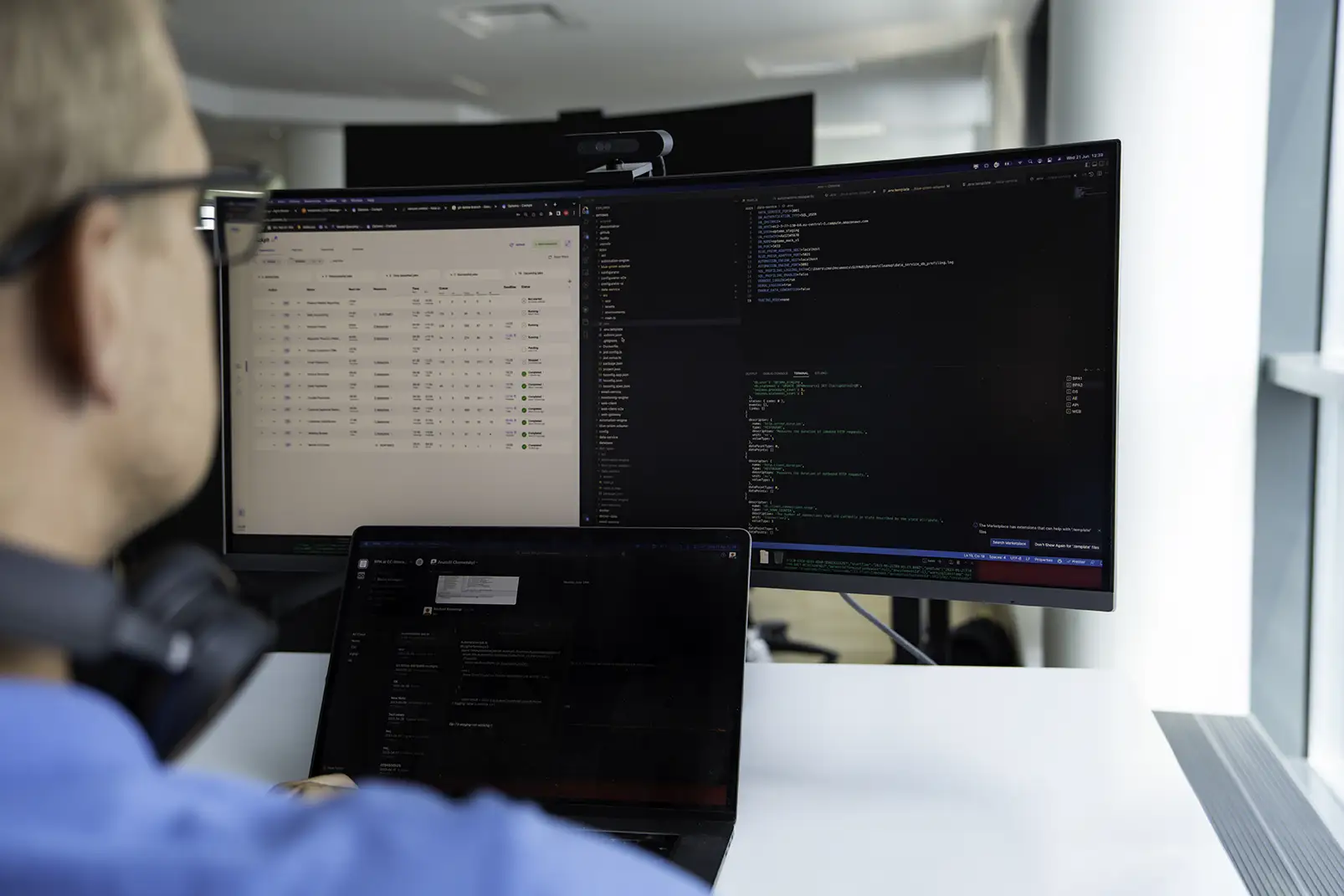%203.jpg)
Mikael Varle
June 9, 2023
•
5 min read
Explore the journey to RPA success, as we delve into the role of stable operations in transitioning from a Value Hunter to an Automation Champion.
Welcome to the diverse landscape of Robotic Process Automation (RPA), where organizations find themselves journeying through various stages of automation maturity. From fresh-faced Automation Beginners taking their initial steps, to accomplished Automation Champions reaping abundant rewards, the spectrum is broad and varied. And somewhere in the midst of this dynamic landscape, we find the eager Automation Value Hunters, ready to delve deeper into the world of automation.
The Hunt for Value: A Persistent Pursuit: Value Hunters, having tasted the initial fruits of RPA, are now driven by the desire to enhance their automation benefits. They are poised to hone their license utilization, amplify RPA deployment, and integrate automation synergistically with their existing technology stack. Their operational approach, however, may still be a work-in-progress, characterized by as mattering of automation across the business landscape.
From Value Hunters to Automation Champions: At the culmination of the automation journey, we have the Automation Champions. These are the organizations that have not merely adopted RPA, but have incorporated it seamlessly into their daily operations. They boast of streamlined RPA operations, optimal license utilization, and well-articulated strategies for automation scale-up.
The variance in value realization between the Champions and Value Hunters can be striking, with some large organizations automating over 20% of their entire operational structure.

Several factors distinguish Champions from Value Hunters, such as technology stack, value measurement techniques, and corporate culture. Today, however, we shine the spotlight on operations, for it is the robustness of operations that propels growth and scales automation efforts without straining human resources.
So what exactly goes into crafting stable operations? Several facets influence the stability of a bot, but for the sake of simplicity, we'll focus on three primary areas:
Development: The creation of robust bots is central to the success of any RPA program. Beyond reliability, it's essential to engineer bots that are simple to maintain and debug for all developers in your team. This requires implementing coding standards, investing in continuous developer training, and prioritizing a modular approach to bot development. Modularity allows for easier maintenance, as components can be replaced or updated without affecting the entire bot. Additionally, all developers should be equipped to maintain any bot, fostering a collaborative and more resilient development environment.
Orchestration: Effective orchestration involves a delicate balance between adhering to business requirements and ensuring operational resilience. Bots need to be triggered based on business demands, but the system must be resilient enough to handle potential failures or interruptions. This requires sophisticated scheduling and workload management tools that can automate bot execution without requiring constant human intervention. Moreover, your orchestration layer should include built-in resilience measures, such as error-handling mechanisms and retry logic, to ensure that your bot operations remain robust in the face of unexpected issues.
Environment: The environment, encompassing applications, servers, virtual machines, and human input, is what the bots interact with to accomplish their tasks. Maintaining a stable environment involves a strategic approach to resource management and infrastructure planning. Ideally, you should pool virtual machines as much as possible to optimize resource usage. Similarly, careful thought should be given to managing dependencies between various components of your RPA environment. Too many dependencies can increase complexity, making your bots more susceptible to breaking down when changes occur. By minimizing dependencies and ensuring a robust environment, you facilitate more efficient and reliable bot operations.
In addition to these three areas, it's also important to have robust reporting mechanisms in place. Clear, real-time visibility into bot performance can help you identify issues before they escalate and make data-driven decisions to optimize your RPA operations. Furthermore, tailored reporting for different stakeholders– from operational staff who need to monitor bot performance, to business leaders who require high-level insights into automation ROI – is essential for maintaining buy-in and supporting strategic decision-making.
If these elements are not managed effectively, operations may falter, limiting your growth and potential. It may lead to lower stakeholder buy-in, given the instability of your bots, or your team may be so occupied with maintaining operations that they miss out on capitalizing on new and exciting opportunities.
Transitioning from a Value Hunter to an Automation Champion is a significant leap, and it's here that the importance of stable operations truly shines. It’s in this landscape where Optomo comes into play.
Stable operations are what separate the Value Hunters from the Champions. They ensure bots operate as designed, processes are automated smoothly, and disruptions are kept to a minimum. They also pave the way for scalability, allowing organizations to expand their automation efforts seamlessly.
Optomo is specifically engineered to streamline the operational phase of the RPA lifecycle. It orchestrates automations, delivers real-time monitoring and insights, and focuses on augmenting efficiency while minimizing downtime.
The path to Automation Champion status calls for a strategic approach, a commitment to continuous improvement, and a deep understanding of the role of stable operations within the RPA lifecycle. With the right tools, like Optomo, and a keen focus on operational stability, organizations can successfully navigate this path.
Stable operations do more than just ensure smooth functioning – they're the foundation upon which a successful RPA program is built.
Ready to redefine your RPA operations? Discover Optomo in action. Schedule your demo today!

